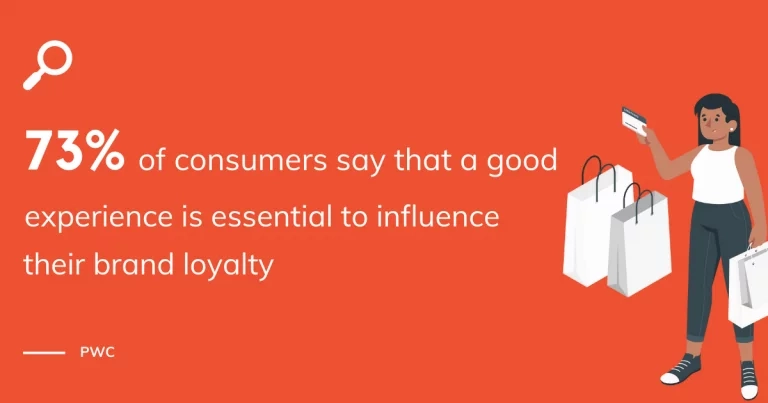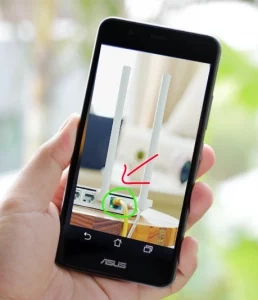Remote customer relations: top 5 customer irritants and how to deal with them



In the age of customer experience, consumers are more demanding than ever with brands and care more about the experience than the product itself. Yet the customer journey is littered with potential irritants: waiting too long, out of stock, inability to speak to a human being when calling customer service… The good news is that irritants are not irreversible! By implementing corrective actions, it is possible to transform the negative consumer experience into a positive one. In this article, discover the irritants that customers encounter when interacting with companies, the importance of removing them and how to remedy them by integrating video communication into your services.
A customer irritant is something that will annoy or irritate the customer during the purchase or customer journey. It is a negative feeling that can have a strong impact on the customer experience and loyalty.
Today’s customer is demanding. They want effective experiences that make the most of their time. Indeed, 73% of consumers say that a good experience is key to influencing their brand loyalty. So anything that wastes the customer’s time will cause frustration and disloyalty.

For brands, it is therefore essential to identify these friction points, as they entail significant costs. These can be financial costs for consumers. For example, if a customer has a stove that breaks down frequently, he will be forced to use electric heating, which will result in additional electricity costs. There may also be intangible costs such as loss of trust if a customer service does not meet expectations for example, or loss of time if the customer has to go through many steps for a purchase. Customer irritants can be diverse and can occur at any point in the customer journey. Over time, these unpleasant experiences degrade the trust customers have in the company and may lead them to end their relationship with the brand.
Customer support is one of the most important departments in a company. When advisors fail to provide an adequate solution to customers, it has an impact on their satisfaction. In addition, expectations of customer service are increasingly high. 96% of consumers say that customer service is an important factor in their choice of brand loyalty according to a Microsoft study. Competent customer service not only delivers a successful customer experience, but also generates loyalty and profits.
You want to deliver a great experience to your customers, but do you know what irritates them when they interact with your customer service? Discover the top 5 customer irritants:
50% of consumers say it is unpleasant to wait to speak to an advisor. Long waiting and response times can frustrate customers and create a negative service experience. This can happen when the company does not have enough agents to answer the phone or when the number of calls is too high for the company.
In all cases, the goal for the company will be to reduce these delays as much as possible in order to resolve customer issues quickly and exceed their expectations. Working on this irritant also offers the company the opportunity to redeem itself after an unsatisfactory experience and to re-enchant customers.
86% of consumers expect conversations with agents to flow seamlessly from one channel to another according to a Gladly study. Customers want to be able to continue conversations across channels (phone, email, chat, SMS, social networks, etc.) at any time. The objective of customer service is therefore to provide customers with a fluid and continuous exchange thanks to the omnichannel nature of the paths.
A study by Clickfox found that 42% of customers are frustrated by having to speak to several agents about the same issue and having to explain the situation each time. It is therefore important to keep a history of the exchanges so that advisors can keep track of the context and key information about the customer. Not only will this remove the irritant, but it will also allow companies to make customer service more efficient.
Three out of four French people say they have already had a bad experience with a customer service department according to an OpinionWay survey. Among them, 72% mention the incomprehension of the advisor regarding their request. It is not always easy for customers to describe in words the problem they are facing. Traditional communication channels such as the telephone, email or chat rely solely on oral language. The difficulty of putting a situation into words leads to frustration for customers. Conversely, it is equally difficult for advisors to understand and visualise the customer’s environment. Ultimately, this often leads to a failure to resolve the problem. The use of visual communication is a good solution to counter this, as the brain processes visual information more easily.
93% of consumers expect a response within 24 hours and 89% of them expect the issue to be resolved within 24 hours according to a Selligent study. First contact resolution is one of the most important metrics for support or customer relationship centres. Furthermore, 31% of consumers consider an experienced advisor to be an important aspect of a good service experience. Indeed, customers expect advisors to be a reliable resource to guide them easily through the resolution of their problem. When interacting with agents, they want them to have detailed knowledge of the products or services so that they can get a solution on the first call. If this is not the case, then customers lose confidence in the company and are likely to turn to a competitor.
Competent customer service is a real added value in the eyes of customers. The company should therefore ensure that all its advisers are experienced and have expertise in their field. Regular training is also a possibility to improve the quality of service.
The health crisis has changed consumer habits and the use of digital communication channels has become more widespread. In particular, video communication has developed strongly in both professional and personal life. In the field of customer relations, video communication allows brands to interact with their customers from a distance. The use cases of video are numerous and can be integrated at different points of the customer journey: remote estimate, sale, customer service, diagnosis, etc.
As we have seen earlier, when a customer contacts a company’s customer service department, they sometimes encounter irritating elements. When integrated with customer support, real-time video is an excellent way to reduce or even eliminate these unpleasant moments.
Firstly, video communication solutions offer the ability to switch from one channel to another easily without interruption. Indeed, when a consumer calls customer support, the advisor can create and send a video invitation while remaining in contact with the consumer without ever having to hang up. The video-assistance session is then a continuation of the telephone call, without interruption, which reduces the customer’s stress, and with the same agent, which means that the customer does not have to repeat the information already exchanged.
The video also makes it easier for the advisor to understand the problem. By showing the situation via the camera, the customer does not need to find the right words to explain the problem he is experiencing. This facilitates communication between the agent and the customer and avoids misdiagnoses or manipulations. In addition, video solutions have collaborative features that simplify the work of customer advisors. Remote photo taking, screen sharing, document transfer or real-time annotations on the video stream help the advisor guide the customer through the problem.

In conclusion, remote visual assistance allows companies to :
Fnac Darty is one of Europe’s leading omnichannel retailers, specialising in the distribution of technical equipment and household appliances, cultural and leisure products. As a leader in after-sales service, the French company has chosen to integrate a video-assistance solution to carry out technical diagnoses and remotely resolve problems encountered with household appliances and multimedia products, prepare home interventions or carry out remote assessments on behalf of insurers. Thanks to real-time video, Fnac Darty records lower rates of in-home interventions (savings of 30,000 trips in just one year), much higher customer satisfaction (satisfaction of over 93% for each video assistance) and a reduced environmental footprint.
To survive in an increasingly competitive landscape, companies cannot turn a blind eye to the experiences of their customers or potential customers. It is critical for brands to identify and address pain points in the customer journey. The implementation of a video-assistance solution is a good way of eliminating certain customer irritants and making the experience more fluid. The simplicity, speed and efficiency of remote video assistance is a major asset for companies seeking to improve. Are you interested in this subject, and would you like to know more? Do not hesitate to contact us for a demo of our solutions!
Claire Boscq, CX Activator and founder of JCX Alliance, shares her unique approach to wellbeing-led customer experience. Discover her vision in this new Apizee CX Voices interview.
[CX Industry Voices] Interview with Claire Boscq
25 Jun 2025
Call Centre Helper’s Xander Freeman spoke to Charles Kergaravat, CMO at Apizee, about the rise of video chat in customer service.
The rise of Video Chat in customer service
20 Jun 2025
Simon Macklin from Salesforce, explains how AI and human empathy combine to shape the future of CX. Discover insights in the latest Apizee CX Voices interview.
[CX Industry Voices] Interview with Simon Macklin
19 Jun 2025
Interested in our solutions?